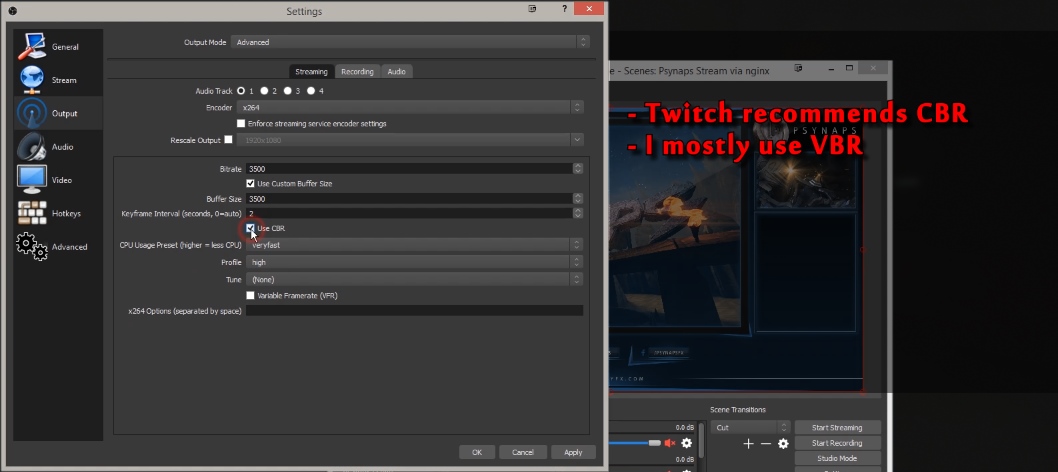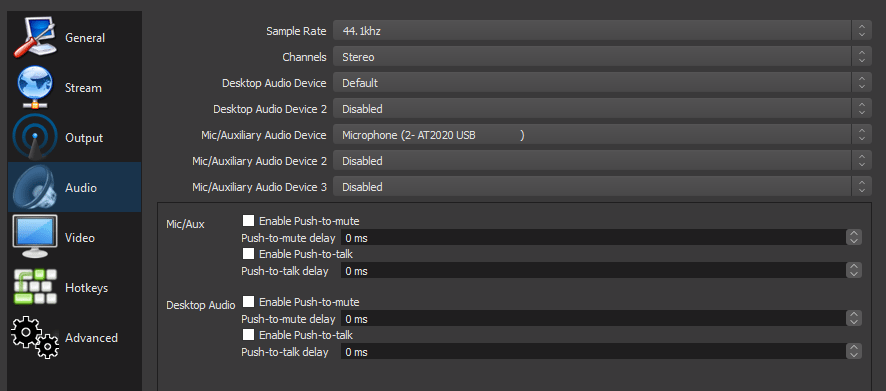

- #BEST OBS STUDIO STREAM SETTINGS 720P#
- #BEST OBS STUDIO STREAM SETTINGS 1080P#
- #BEST OBS STUDIO STREAM SETTINGS FREE#
The image may look a bit blockier or pixelated, but you will be able to retain your resolution/fps.īe very careful with this setting, because even one step faster or slower can have a huge impact on CPU usage. Slower presets will use more computations for quality, but will use much more CPU.įor example, if you would like to try to reduce CPU usage without modifying your resolution or FPS, you can reduce your CPU usage by changing your x264 preset to superfast or ultrafast, and x264 will spend less time trying to make the image look good, and will spare you some CPU cycles. Faster presets will use less CPU at the cost of quality computations. The name of the preset is intended to indicate how "fast" the encoder should run.

This setting can be changed in Settings > Output (check the Enable Advanced Encoder Settings if you're in Simple mode) > Encoder Preset. The OBS default is veryfast, which for the majority of cases is the best balance between CPU usage and video quality. The video encoder, x264, has a number of "presets" that will change your video quality and CPU usage accordingly. You may even feel the need to lower your frame rate to something below 30 FPS, in the case that your CPU is really weak and struggling.

It will reduce the number of frames your CPU has to process in a give time span, which will reduce CPU usage. If you're streaming above 30 FPS, another option is to consider is lowering your frame rate to 30 FPS.
#BEST OBS STUDIO STREAM SETTINGS FREE#
Feel free to experiment with which filter works best for you. Performance-wise, though they aren't that much different. The different downscale filters (bilinear, bicubic, and Lanczos) simply change the algorithm used to shrink the picture: bilinear is fastest and takes the fewest resources, but doesn't look as good, while Lanczos takes more resources but looks better. You can keep your Base (Canvas) Resolution the same, so that your layout doesn't change, and then downscale the resolution to whatever gives you good performance. You can change how much you want to downscale in Settings > Video > Output (Scaled) Resolution.
#BEST OBS STUDIO STREAM SETTINGS 720P#
So you can downscale your resolution to 720p (or lower) to keep your image the same, but using a smaller resolution to reduce CPU load.
#BEST OBS STUDIO STREAM SETTINGS 1080P#
You may want your base resolution at 1080p, since that's the resolution your content is in, but your CPU may not be able to encode an un-downscaled 1080p video.

When you downscale, OBS takes your scene and shrinks it as much as you tell it to before giving it to the encoder. The most common way to reduce CPU usage is to downscale your resolution. For example, 1080p has more than twice the number of pixels in each frame versus 720p, and your CPU usage increases accordingly. The resolution that you are encoding at has the biggest impact on CPU usage. Here are some ways you can reduce resource utilization and, hopefully, make both OBS and your programs run faster while encoding: In some cases, OBS will say "Encoding overloaded!" on its status bar, meaning that your computer can't encode your video fast enough to maintain the settings you have it set to, which will cause video to freeze after a few seconds, or periodic stuttering. However, some people might experience high CPU utilization, and other programs running on your computer might experience degraded performance while OBS is active if your settings are too high for your computer's hardware. OBS uses the best open source video encoding library available, x264, to encode video. Encoding video is a very CPU-intensive operation, and OBS is no exception.


 0 kommentar(er)
0 kommentar(er)
